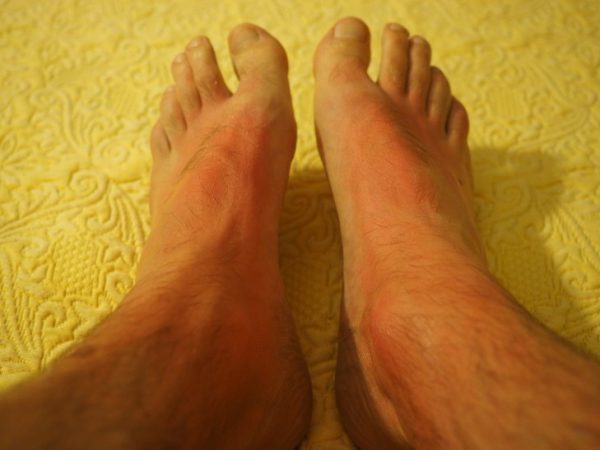
Skin Care Tips For Diabetic Patients
People who are suffering from diabetes must take care of their skin properly. With high blood sugar level diabetic patients lose the body fluid and it results in dry skin. The dry skin can also happen when someone has neuropathy pain associated with diabetes.
The nerves in the legs and feet may not get the message to sweat, which is necessary to keep skin soft and moist. Keeping your skin moisturized when you have diabetes is one of the easiest ways to prevent skin problems. Legs are the easy entry portal for microorganisms to enter from dirt. Dry skin cracks up and leads to an entry place for bacteria and fungi that can infect the skin.
Having high blood sugar for a long time can lead to poor circulation and nerve damage. Poor circulation and nerve damage can make it hard for body to heal wounds. Infection may lead to sores and uncontrollable wounds. These open wounds are called diabetic ulcers. Here are some skin care tips for diabetic condition.
1. Always keep your skin clean and dry.
2. Keep your diabetes well managed. Keep blood sugar as normal as possible. People with high glucose levels tend to have dry skin and less ability to fend off harmful bacteria. Both conditions increase the risk of infection.
3. After you wash with a mild soap, rinse and dry thoroughly in every nook and cranny of your body. Use a moisturizer, but not between your toes.
4. Prevent dry skin. Scratching dry or itchy skin can open it up and allow infection to set in. Moisturize your skin to prevent chapping, especially in cold or windy weather.
5. Avoid very hot baths and showers, which can dry your skin. Avoid soaking your feet too because extended exposure to water softens the feet and makes your skin more prone to being pierced.
6. If your skin is dry, don’t use bubble baths. Moisturizing soaps may help. Afterward, use a standard skin lotion, but don’t put lotions between toes. The extra moisture there can encourage fungus to grow.
Did you know? A yeast-like fungus called Candida albicans is responsible for many of the fungal infections affecting people with diabetes. This fungus creates itchy red rashes, often surrounded by tiny blisters and scales. These infections most often occur in warm, moist folds of the skin.
7. During cold, dry months, keep your home more humid. Bathe in less time during this weather, if possible.
8. Inspect your body for red spots, blisters and sores that could lead to infection.
9. Treat cuts right away. Wash minor cuts with soap and water.
10. Protect skin from the elements. To protect your skin from the sun, use sun creams with at least SPF15 or higher.
11. To protect your skin from the cold or wind, cover your ears and face, including your nose, and wear a hat. Also wear warm gloves and shoes or boots.
12. If you are prone to acne, talk to your doctor before selecting a facial moisturiser. Some moisturisers tend to make acne worse. Use products labelled non-comedogenic or non-acnegenic.
13. Keep a bottle of lotion near the basin so you can use it after washing your hands.
14. Limit products you use on your skin to decrease your chances of having a reaction.
15. Look for any bumps or changes in appearance on your feet and have your doctor look at your feet at least twice a year during your physical.
16. Control blood pressure and cholesterol by taking prescribed medications, which will improve circulation and keep your skin healthy.
17. Drink plenty of fluids, like water and caffeine-free, sugar-free drinks, to keep your skin hydrated.
18. Eat foods rich in omega-3 fatty acids, which nourish the skin. This includes fish like salmon, sardines, albacore tuna and mackerel, as well as tofu and other forms of soybeans, walnuts, flaxseed and their oils.
19. Treat cuts right away. Wash minor cuts with soap and water. Only use an antibiotic cream or ointment if your doctor says it’s okay. Cover minor cuts with sterile gauze. See a doctor right away if you get a major cut, burn, or infection.
20. Use mild shampoos. Do not use feminine hygiene sprays.
21. Apply lip balm to prevent chapped lips.
22. Stay away from stinging insects like honeybees and take precautions for bug bites as much as possible.
23. Wear gloves and proper shoes when you are working in the garden.
24. See a dermatologist about skin problems if you are not able to solve them yourself. And, talk to your doctor or dermatologist (skin doctor) if you are not able to solve a skin problem yourself.
25. Take good care of your feet. Check them every day for sores and cuts. Wear broad, flat shoes that fit well. Check your shoes for foreign objects before putting them on.
26. Always drink plenty of water. It is wise to cut down on alcohol or caffeine, since these substances can dehydrate the body, robbing the skin of fluids.
If you have diabetes, follow your physicians advice regarding nutrition, exercise, and medicine. Maintaining control of blood glucose level within the range is the best way to keep healthy skin in diabetic conditions. Proper skin care also can help reduce your risk of skin-related problems.
References:
- http://my.clevelandclinic.org
- http://www.webmd.com/diabetes/skin-problems
- http://www.everydayhealth.com/
Image credit: https://www.needpix.com/photo/677382/sunburn-feet-skin-red-burned-flushed-allergy-skin-irritation-part-of-the-body (Free for commercial use)
Author: HealthyLife | Posted on: August 28, 2018
« Precautions when returning to water Flooded home Tips to prevent injury during work out »






















Write a comment